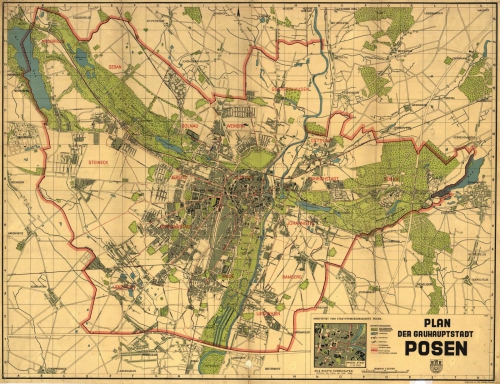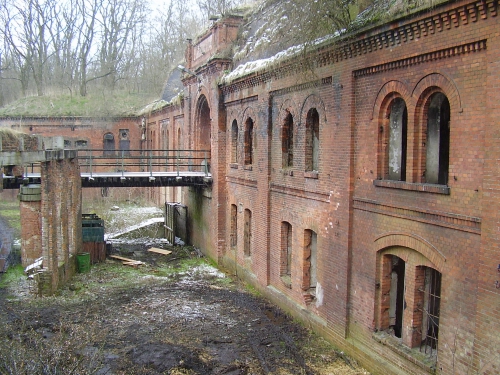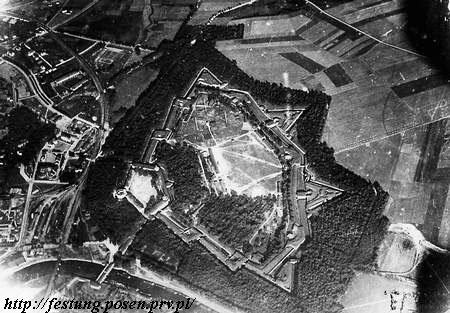samedi, 07 mars 2015
Dresden and Poznan: Two Different Ways to Wage War

Dresden and Poznan: Two Different Ways to Wage War
|
Ex: http://www.strategic-culture.org |
|
The Red Army and British-American forces had one enemy - the German Wehrmacht but quite often they waged different wars. The liberation of Polish city of Poznan by Red Army and the bombing of Dresden by allies – one event following another in a week - took place 70 years ago, February 1945. These examples provide a good illustration to support the point of view stated above.
During the Vistula-Oder Offensive the 1st Belarussian Front under the command of Marshal Georgi Zhukov Marshall, the «Hero of the Soviet Union», managed to secure two bridgeheads west of the Vistula River between 27 July and 4 August 1944 opening the way to Berlin. The concentrations of German forces were left blocked but not defeated at Schneidemüh and Poznan. With the main forces continuing advance in the western direction, it took time and effort to rout the German grouping at Poznan. General Vasily Chuikov, the commander of the 8th Army (to become later Marshall of the Soviet Union) was responsible for the operation planned to smash the enemy forces there. In his memoirs he said the Germans-built fortifications were classic Vauban-style fortresses (Sébastien Le Prestre de Vauban was a Marshal of France and the foremost military engineer of his age, famed for his skill in both designing fortifications and breaking through them). The design envisioned the construction of underground forts in the center and citadels at the junctures to accommodate a large garrison… In Poznan the city and fortifications were strongly defended and integrated into a single defence plan to coordinate fire. The Fort Winiary citadel stood on a hill to the north of the city centre. Around the perimeter of the city were 18 massively-built forts spaced at intervals of about 2 kilometres in a ring with a radius of about 5 kilometres. General Chuikov described the forts as «...underground structures each with several storeys, the whole projecting above the surrounding terrain. Only a mound was visible above ground -- the layer of earth covering the rest. Each fort was ringed by a ditch ten metres wide and eight metres deep, with walls revetted with brickwork. Across the ditch was a bridge, leading to one of the upper storeys. Among the forts, to the rear, there were one-storey brick bunkers. These were clad in concrete almost a full metre thick, and were used as stores. The upper works of the forts were sufficiently strong to provide reliable protection against heavy artillery fire... the enemy would be able to direct fire of all kinds against us both on the approaches to the forts and within them, on the rampart. The embrasures were such that flanking fire from rifles and machine-guns could be directed from them». Together with Volkssturm (a German national militia of the last months of World War II) Poznan was defended by a 60 thousand-strong garrison. The offensive started early in the morning on January 26. The first strike was delivered from the south. It was unexpected by the enemy. Two southern forts were seized on the Warta River’s western bank. As a result, the troops and tanks penetrated the ring of forts to attack the enemy from behind. The attack from the north produced little results. The Soviet troops did not attack from the west. Chuikov remembers that there was a way out left on purpose to let the enemy withdraw from the city-fortress. But Germans did not leave. A long and hard battle was ahead. On January 28, another attack was launched. Chuikov addressed the German troops surrounded in Poznan to put forward an ultimatum. It read «Officers and soldiers of the Poznan garrison. You are surrounded. There is no way you can leave the city. I, General Chuikov, offer you to immediately lay down your arms and surrender. I guarantee life and return home after the war is over. Otherwise you’ll be wiped out. The death of civilians in Poznan will be your responsibility. Do not hesitate. Raise white flags and come to our side. General Chuikov». But the garrison had no intention to surrender. Soviet aviation and artillery delivered strikes at fortifications trying to avoid damage to the buildings inside the city and avoid casualties among civilians. The Fort Winiary citadel was ruined. The soldiers hid underground.
By February 5 the assault teams fully had liberated the residential areas. After February 12 the Fort became the main target. As the Soviet troops approached, the resistance grew. The 5-8 metre high brick walls protected the enemy preventing tanks from advance. Heavy artillery pieces were moved near to fire at the Fort from the distance of 300 metres. But even 203mm projectiles did not inflict much damage to the thick walls. At the time the 1st Belarus Front forces moved to the west reaching the Oder. The general assault started on February 18 to last without stop for four days. Having built an assault bridge, Red Army tanks and assault guns of the 259th and 34th crossed into the main grounds of the citadel early at 3 o’clock on 22 February commencing the final struggle for the old fortress. The groups of 20-200 men started to surrender. Only 12 thousand troops remained out of 60 thousand strong garrison. The bloody fighting ended on February 23, 1945, the day of the 17 anniversary of the Red Army. 224 artillery pieces fired 20 salvos to salute the victory. Here is the example of war waged by allies. On February 13-15, they delivered air strikes against Dresden with the inflicted damage comparable with Hiroshima and Nagasaki attacks. Americans called the operation «Thunderstrike». Who was it targeted against? The city had no significant defence industry facilities and was flooded with refugees. A Royal Air Force (RAF) memo issued to airmen on the night of the attack said: «Dresden, the seventh largest city in Germany and not much smaller than Manchester is also the largest unbombed builtup area the enemy has got. In the midst of winter with refugees pouring westward and troops to be rested, roofs are at a premium, not only to give shelter to workers, refugees, and troops alike, but to house the administrative services displaced from other areas». Why raze to the ground a city that had no substantial importance for the war effort? The very same memo was rather cynical about it. It read «The intentions of the attack are to hit the enemy where he will feel it most, behind an already partially collapsed front... and incidentally to show the Russians when they arrive what Bomber Command can do». That’s what RAF really did by bombing from safe altitude the city flooded with demoralized people.
As the end of war was approaching the British-American aviation started to more frequently deliver politically motivated strikes destroying cities of no significance for German war effort to be soon liberated by Red Army, for instance Prague, Sofia etc. Dresden is the brightest example of how this vicious tactics was employed. The devastated area in Dresden exceeded 4 times the devastated area of Nagasaki. 1,500-degree heat hit the larger part of the city. People running to reach city’s outskirts fell into melting asphalt. Smoke was 45 metres high. At least 25 thousand died. Some experts say the death toll was as high as 135 thousand. Günter Wilhelm Grass, a German writer and recipient of the 1999 Nobel Prize in Literature, called the bombing a war crime. This point of view is supported by many. Dr. Gregory Stanton, president of Genocide Watch, expressed himself more bluntly saying the Allied firebombing of Dresden and the nuclear destruction of Hiroshima and Nagasaki were war crimes and also acts of genocide. |
00:01 Publié dans Histoire | Lien permanent | Commentaires (0) | Tags : histoire, posen, poznan, dresde, dresden, deuxième guerre mondiale, seconde guerre mondiale |  |
|  del.icio.us |
del.icio.us |  |
|  Digg |
Digg | ![]() Facebook
Facebook






Les commentaires sont fermés.